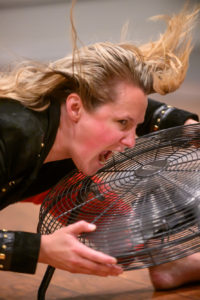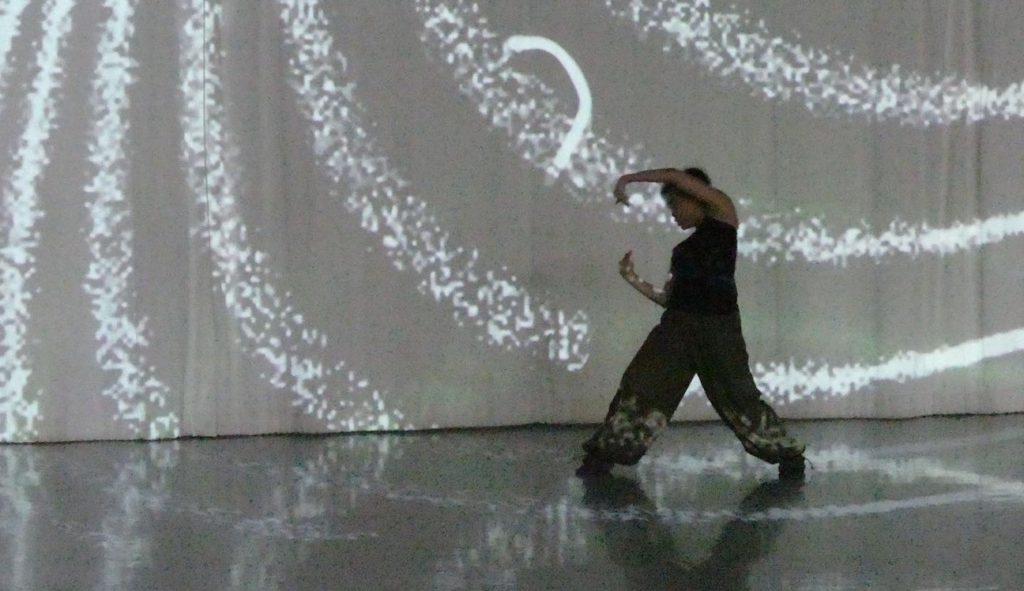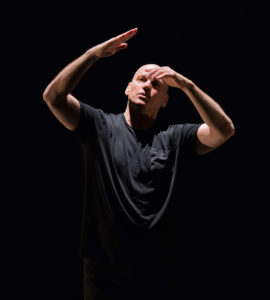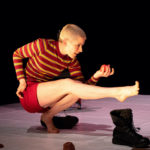Dancing on the Edge at 35: Stories of our lives - Vancouver Ballet Society
- Home
- Reviews 2020 - 2023
- Dancing on the Edge at 35: Stories of our lives

By Kaija Pepper
For 35 years, over 10 days each July, Vancouver — a port city on the edge of the Pacific Ocean — has been the loyal home to Canada’s longest-running professional dance festival, Dancing on the Edge.
This edition included only one international company and most mixed bills featured just two productions. But the focus on local and national artists had enough of those elusive “magic moments” to properly celebrate the achievement of Donna Spencer, who co-founded the festival all those years ago and is now sole artistic producer. She also runs the Firehall Arts Centre, home base for the Edge.

As a keen reader of memoir (and having had my own go at the form), I was drawn to the several autobiographical solos in the line-up. In Edge Three’s Beast Prescribed, Meredith Kalaman — a former Vancouverite now based in Halifax — told the difficult tale of her mother’s mental illness and move to a care home during the pandemic. In bravely revealing vignettes (direction and dramaturgy by Raïna von Waldenburg), Kalaman was sure and clear in her dramatic impetus.
Beast Prescribed ambitiously weaves in the story of American figure skater Tonya Harding — the program note calls the 30-minute work an ode to Harding, who was banned from the Olympics for involvement in her ex-husband’s physical attack on competitor Nancy Kerrigan. I wasn’t convinced by this part of the story: I could see the emotional appeal of championing the feisty working-class skater, but needed more reasons to buy in, and more connective tissue to Kalaman’s story. The Harding thread did suggest an entry into a powerful boxing scene (Harding went on to become a boxer). Another well-staged scenario took place under a revolving disco ball: set to Laura Branigan’s cover of Gloria, about a woman heading for a breakdown, Kalaman’s sexy bravado carried another, more subtle, and vulnerable note.

Joe Laughlin, who performed at the first Edge in 1988, presented a draft of I remember…. Laughlin, having had a long career as a gymnast and then a dancer and choreographer, has a lot to look back on, and he’s an engaging stage presence. In black sweatshirt and pants, red Nikes on his feet, Laughlin seemed happy to be in front of his audience. “I’m 62 now, pretty old to be dancing,” he says, daring to do so all the same.
Laughlin shared Edge Two with a young Vancouverite, Sarah Hin Ching U, whose Silent Howl is only loosely autobiographical. The abstract work “celebrates the beauty and diversity of neurodivergent minds,” according to the program, with U sharing her own experience of neurodiversity in a recent interview.

The first-time Edger created a well-constructed choreography built on geometric shapes expressed by U’s body as she danced in front of an upstage screen, on which Alexandra Caprara’s animation of straight, zig-zag, and curved lines was projected. The dancer’s body was beautifully integrated with the animation, and both were in tune with Jack Adrian’s spare jazzy soundscape. Toward the end of the 30 minutes, U moved downstage and away from the screen of which she had seemed so much a part. As she came nearer to the audience, with whom she didn’t engage, Silent Howl drifted: the dancer comes closer, but the work doesn’t.

The door opened west tackles the life trajectory of Montreal’s Marc Boivin, well-known across Canada as a veteran dancer with uncommon sensitivity. Boivin certainly brings his delicate touch to the choreography, created by Sarah Chase, who has her own following for her unique weaving together of words and movement. Some life events were only mentioned, but a few family stories took us more deeply inside, such as the childhood drama around music practice versus doing the dishes, or, more recently, going to the swimming pool with his father, whose Parkinson’s disease caused his body to become rigid. The rare moments of pure dance to music were highlights, containing a depth of Boivin’s dance history.
There was much more, including opening night’s collaboration between Vancouver’s Wen Wei Dance and Italy’s ADARTE Compagnia. The two loosely connected parts of Barocco Rave — Beat Armonico by Francesca Lettieri, Re | Build | Us by Wen Wei Wang — had Ariana Barr, Alexis Fletcher, Adrian De Leeuw, and Matthew Wyllie strutting, laughing, shouting one-liners, playing drums, skateboarding, and so on. It didn’t have the weight of Wang’s recent work for Ballet Edmonton, the second company he heads across the mountains in Alberta, but the two-part exploration of baroque excess was certainly lively.
One more show to squeeze in: Montrealer Lina Cruz’s Tomato Blues, the second half to Edge Three. Like Barocco Rave, there’s lots of noodling; in this case, some of it is directed to a beloved tomato. At first I resisted the nonsense, but performer Geneviève Robitaille pulled off the solo’s inventiveness with such bright belief that, by the end, I fell for the dancer and the dance.

